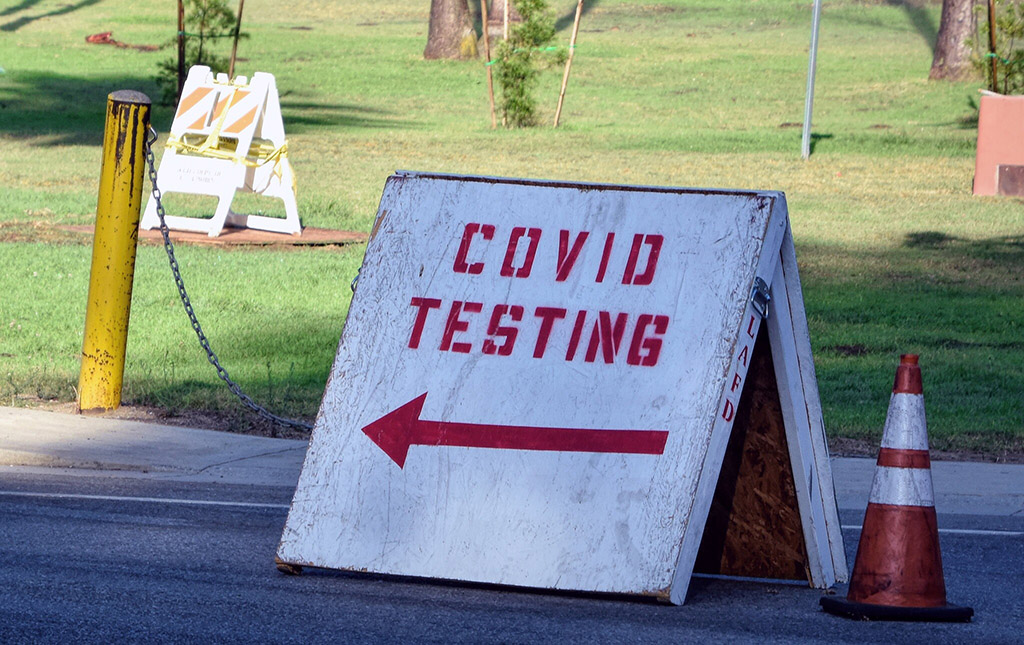With British Columbia’s COVID-19 testing system swamped, doctors and modelling experts say the province is flying blind into a crisis for its health-care system.
The true daily case total is likely three to four times more the nearly 3,000 cases reported on average each day, according to new modelling from the BC COVID-19 Modelling Group, a collective of academics and experts in disease modelling and epidemiology who provide analysis of B.C.’s pandemic situation.
And all aspects of B.C.’s pandemic response are hampered by the lack of reliable data on case numbers, giving the Omicron variant even more opportunity to spread, said one doctor.
“The health-care system is going to be overrun, and the question now is timing, and how overrun it will be,” said Dr. Lyne Filiatrault, a former emergency physician who helped avert the SARS epidemic in Vancouver. “We are completely flying blind.”
As the dominant Omicron variant doubles at least every 3.6 days, new analysis from the group of independent modellers and experts predicts between 2,000 to 10,000 people could be hospitalized at a late January peak.
B.C.’s previous hospitalization record was 515 patients in April 2021.
Provincial health officer Dr. Bonnie Henry said workplaces, including health-care settings, should plan for as many as 30 per cent of workers to be unable to work due to COVID-19 isolation at any given time.
B.C. does not publicly report the number of health-care workers unable to work due to exposure or illness with COVID-19.
But without accurate testing and isolation data, it is nearly impossible to understand whether recent public health orders are having any positive effect on the pandemic’s trajectory or make contingency plans for hospitals inundated with COVID-19 patients.
With hours-long waits for public PCR tests — the best way to detect infection at even low viral loads — B.C. has asked anyone who is not high-risk, an essential worker or over 65 not to be tested.
Instead, those who are symptomatic or have been exposed are being offered take-home rapid tests, which can only detect higher viral loads, at certain testing centres.
People who take a rapid test can self-report their results through the BC Centre for Disease Control, but the province isn’t publicly reporting how many people have been given tests and how many are reporting a positive result.
The current test-positivity rate for PCR tests is about 20 per cent in all health authorities, signalling the virus is widespread in every corner of the province.
Filiatrault said with Omicron everywhere, it is unlikely there will be any slack in the system when one region’s system is overwhelmed. The north was able to transport patients to the Lower Mainland and Vancouver Island during the Delta wave in the fall, but there won’t be anywhere for them to go this time.
“Omicron is going to expose the weakest links in our chain. And that weakest link is everything we haven’t learned from previous variants and everything we haven’t bolstered in terms of quality masks for health-care workers, everything we haven’t done to get our boosters into arms,” said Filiatrault, a member of the advocacy collective Protect Our Province BC.
“It’s like they’re doing everything to get everyone infected.”
The new variant, which more easily infects and transmits to and from vaccinated people, vastly increases everyone’s chance of infection, vaccinated or not, compared to Delta.
People who are not fully vaccinated have about a 1.5 times higher chance of being infected by Omicron than someone with two doses of vaccine, according to Thursday’s modelling.
Previously, unvaccinated people were eight times as likely to be infected by Delta.
But double vaccination, and especially with a booster, markedly increases protection from severe illness and hospitalization from Omicron. Three shots of Pfizer have an 88-per-cent protection rate, comparable to the protection of two shots from Delta.
Filiatrault urged British Columbians to wear well-fitted masks like N95s and KN95s and limit contacts as much as possible. Avoiding risky activities and taking care when walking or driving on icy roads will also help prevent other non-pandemic pressures on the health-care system.
“We’re at the most dangerous phase of the pandemic,” said Filiatrault. ![]()
Read more: Coronavirus

















Tyee Commenting Guidelines
Comments that violate guidelines risk being deleted, and violations may result in a temporary or permanent user ban. Maintain the spirit of good conversation to stay in the discussion.
*Please note The Tyee is not a forum for spreading misinformation about COVID-19, denying its existence or minimizing its risk to public health.
Do:
Do not: